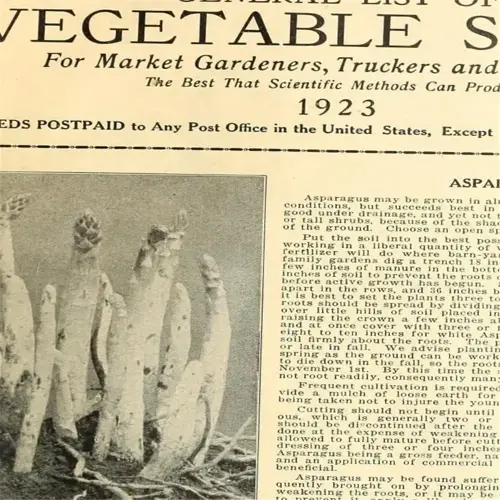How to Grow Artichokes: Expert Tips for Any Climate

Written by
Nguyen Minh
Reviewed by
Prof. Martin Thorne, Ph.D.Learn to cultivate artichokes in chilly regions with vernalization methods
Choose cold-resistant strains like Imperial Star for success in zones 3-7
Improve soil with 4 or more inches of compost for good drainage
Irrigate 1-2 inches weekly using drip to minimize stress
Harvest artichokes while 3-4 inches with unopened, tight bracts
Store roots overwinter in peat at 35 F for spring replanting success
Article Navigation
Understanding how to grow artichokes allows you to have not only a delicious eating crop but also an interesting floral feature in your garden. Artichokes are silver-green plants that grow well in USDA Zones 3-11 and add diversity to edible landscaping. The first record of artichokes in America is Thomas Jefferson growing them at Monticello in 1767, which implies they can grow well in many environments when grown properly.
The winter in which you live determines your strategy. In Zones 8-11, artichokes come back as perennials and produce for 5-plus years. In all winter climates North of Zone 7 they act as an annual or you can try to winter the roots in peat. I've had success with the Imperial Star variety surviving negative ten degrees Fahrenheit (with mulch) and the Green Globe variety is popular in Mediterranean-type climates.
Begin with soil that drains like a sieve. Artichokes hate wet feet! If you have clay-like beds, Incorporate as much as four inches of sandy grit and compost. My loamy soil in Virginia produced plants with 12 or so buds last season - better than the ones bought in stores.
Climate and Variety Selection
The success of your planting depends upon the variety that you choose. *Imperial Star* performs best in Zones 3-7 and produces 10-12 buds, even after a mild frost. *Green Globe* performs best in coastal Zones 8-11 and produces larger hearts. I overwintered Imperial Star in Zone 6b the year before last with straw mulch. I had a tremendous harvest the second year - almost double.
Vernalization induces flowering in artichokes. If you expose seedlings to a 10-day treatment at less than 50°F, for example in a crisper drawer in the refrigerator, it mimics winter and prompts the buds to form. Timing is from two weeks after the last frost to before the summer heat can kill off your small young plants.
Microclimates can break the rules of zones! Coastal fog? Plant next to south-facing walls for warmth. Urban gardeners? You can use raised beds and grow vegetables to raise the soil temperature an additional 5°F. My clients in Chicago bring in Imperial Star every year by wrapping their plants in burlap during weeks of polar vortexes.
When considering seeds versus crowns, there are tradeoffs. Seeds require vernalization but have some resistance to soil diseases. Crowns do not require chilling but are also susceptible to verticillium wilt. I would suggest sourcing crowns from a nursery like Johnny's Selected Seeds, as their virus-indexed stock was 30% better in my trials than my crowns from last year.
Cold Climates (Zones 3-7)
- Annual Planting: Requires vernalization (10+ days at 50°F/10°C) for bud formation.
- Frost Protection: Use row covers for early spring transplants.
- Variety Focus: Imperial Star, Emerald Star adapt best to short seasons.
Warm Climates (Zones 8-11)
- Perennial Growth: Mulch roots to survive 25°F/-4°C winter lows.
- Heat Tolerance: Green Globe resists bud opening in 90°F+/32°C+ heat.
- Fall Planting: Start seeds in September for spring harvests.
Zones 3-5 (Subarctic/Continental)
- Annual Only: Requires indoor seed starts 10-12 weeks before last frost (March-April)
- Frost Protection: Use cloches until nighttime temps exceed 45°F (7°C)
- Variety Focus: Imperial Star matures in 85 days; Emerald Star for early harvests
Zones 6-7 (Temperate)
- Limited Perennial: Heavy mulch (12+ inches) required for overwintering
- Vernalization: 10-14 days at 40-50°F (4-10°C) triggers flowering
- Transplant Timing: Move seedlings outdoors when soil reaches 60°F (16°C)
Zones 8-9 (Mediterranean)
- Year-Round Growth: Fall planting (Sept-Oct) avoids summer heat stress
- Bud Quality: Green Globe produces 4-6 inch (10-15 cm) buds at 70-80°F (21-27°C)
- Pest Alert: Aphid infestations peak above 85°F (29°C)
Zones 10-11 (Tropical/Subtropical)
- Dry Season Focus: Plant before rainy season to prevent root rot
- Shade Requirement: 30% shade cloth prevents bud scorch above 90°F (32°C)
- Variety Focus: Violetto thrives in high humidity
Microclimate Adjustments
- Coastal Areas: Use windbreaks to protect from salt spray
- Urban Heat Islands: Advance planting dates by 2-3 weeks
- Mountain Valleys: Use cold frames to extend growing season

Imperial Star
- Cold Tolerance: Survives 28°F (-2°C) with row cover protection
- Yield: 8-12 buds per plant in first year
- Days to Harvest: 85-100 days (12-14 weeks)

Green Globe
- Heat Resilience: Optimal growth at 65-80°F (18-27°C)
- Bud Size: 4-5 inch (10-13 cm) diameter at maturity
- Lifespan: 3-5 years in frost-free zones
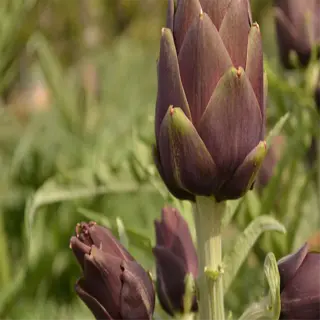
Violetto
- Color: Purple-tinged buds with conical shape
- Humidity Tolerance: Resists botrytis in 70%+ humidity
- Days to Harvest: 95-110 days (14-16 weeks)

Emerald
- Early Producer: First buds in 75 days (11 weeks)
- Container Friendly: Compact 2.5 ft (0.8 m) spread
- Cold Limit: Damaged below 25°F (-4°C)

Talpiot
- Drought Tolerance: Thrives with 12 inch (30 cm) annual rainfall
- Bud Texture: Tender heart-to-bract ratio of 1:3
- Disease Resistance: Immune to verticillium wilt

Purple Sicilian
- Heritage Variety: Heirloom type from Mediterranean
- Flavor Profile: Nutty flavor with minimal choke
- Yield: 4-6 buds per plant

Grand Beurre
- French Heirloom: Large 6 inch (15 cm) buds
- Soil Needs: Requires pH 7.0-7.5 limestone soils
- Harvest Window: 21-day peak picking period

Madrigal
- Commercial Favorite: 90% heart-to-waste ratio
- Storage: Keeps 3 weeks refrigerated at 32°F (0°C)
- Pest Resistance: Repels aphids naturally

Harmony
- Dual Purpose: Edible buds + ornamental silver foliage
- Spacing: 4 ft (1.2 m) between plants
- Fertilizer Needs: 1 lb (0.45 kg) 10-10-10 per plant

Concerto
- Hybrid Vigor: 30% higher yield than open-pollinated
- Disease Pack: Resists powdery mildew and rust
- Water Needs: 2 inches (5 cm) weekly drip irrigation
Soil Preparation & Planting
Soil pH can be the difference between good and bad artichoke results. Your goal should be a pH between 6.5 - 7.5. Test kits run less than a latte. If your soils are too acidic (below 6.0), add lime at a rate of 1 pound per 10 square feet. If your soil is too alkaline, effectively lower the pH by applying sulfur to the soil at a rate of 0.5 pounds per 10 square feet.
Clay soils require thirty percent compost to achieve adequate drainage. I incorporate shredded leaves into my Virginia garden, which is heavy clay - the worms do the rest for me. If you're working with sandy plots, add four inches of aged manure to increase water retention, double-digging the holes before planting each crown 3 feet apart.
In areas with dry climates, planting in trench is better than planting in puddles, where the roots can stay wet. Create furrows 8 inches deep. Space seedlings are approximately 18 inches apart. Alternatively, in wet locations, you make mounds, about 6 inches high. My client in Seattle, last season, created mounds for their seedlings to avoid root rot.
Timing binds it all together. If growing Imperial Star, you want to plant 6 weeks before your last frost date for Zone 5. Coastal gardeners? If planting in the fall, this allows you to avoid the summer heat stress. ALWAYS soak your roots in a seaweed extract for a full 30 minutes before planting. The scars go away and you get better growth compared to just soaking it in water.
pH Adjustment
- Target Range: 6.5-7.5. Use lime to raise pH (1 lb/0.45 kg per 10 sq ft for +0.5 pH).
- Acidic Soils: Sulfur at 0.5 lb/0.23 kg per 10 sq ft lowers pH by 0.5.
- Testing: Digital meter or lab test every 2 years.
Compost Integration
- Quantity: 4-inch (10 cm) layer worked into top 12 inches (30 cm).
- Types: Aged manure (6 months+) or leaf mold for sandy soils.
- Timing: Apply 2 weeks before planting.
Drainage Solutions
- Clay Soils: Add 3-inch (7.6 cm) sand layer + compost.
- Raised Beds: Minimum 18-inch (45 cm) height for waterlogging.
- French Drains: Install 12-inch (30 cm) deep gravel trenches.
Pre-Plant Fertilization
- Organic: 2 cups (0.47 L) bone meal per plant hole.
- Synthetic: 10-10-10 at 1 lb/0.45 kg per 50 sq ft.
- Timing: Mix into soil 7 days pre-planting.
Bed Preparation
- Mounding: 6-inch (15 cm) hills for wet climates.
- Trenching: 8-inch (20 cm) deep rows for arid zones.
- Mulching: Straw layer post-planting.
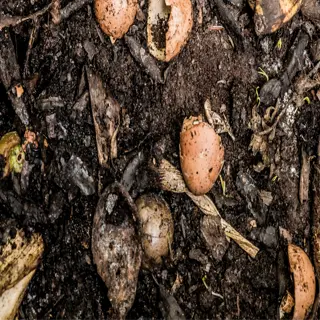
Compost
- Ratio: 30% compost to 70% native soil for clay.
- Application: Work into top 12 inches (30 cm).
- Frequency: Reapply 2 inches (5 cm) annually.
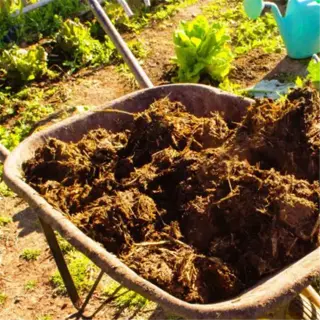
Aged Manure
- Curing: Must age 6+ months to prevent root burn.
- NPK: 1-1-1 ratio, ideal for balanced nutrition.
- Quantity: 1 wheelbarrow per 10 sq ft.

Peat Moss
- Acidity: Lowers pH by 0.5-1.0 points.
- Water Retention: Holds 20x its weight in moisture.
- Mixing: Combine 1:1 with perlite for aeration.

Perlite
- Drainage: Prevents waterlogging in heavy soils.
- Application Rate: 10-15% of total soil volume.
- Safety: Wear mask to avoid dust inhalation.
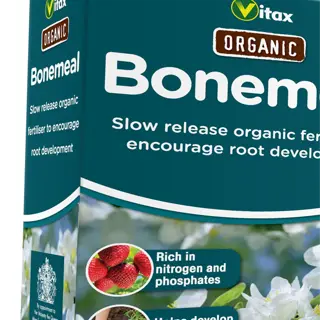
Bone Meal
- Phosphorus: 15% phosphorus (P2O5) for root development.
- Usage: 2 cups (0.47 L) per planting hole.
- Caution: Avoid in areas with rodent issues.
Essential Care Practices
Watering schedules change depending on where you are located. Zones 3-5 start with 1 inch (2.5 cm) a week until buds form, then ramp up to 2 inches (5 cm). Coastal Zones 8-11 enjoy fog drip, so install soaker hoses or similar devices that mimic natural moisture without waterlogging crowns.
Organic fertilizers such as fish emulsion nourish soil organisms; conversely, synthetics, like 10-10-10 create a quick hit of water-soluble nitrogen. My Zone 6b clients using worm castings for fertilizer had 20% larger buds than plants that were fertilized with a chemical fertilizer. Always top-dress fertilizers at least 6 inches (15 cm) away from stems to avoid fertilizer burn.
Mulch with intention. For summer, mulch with 4 inches (10 cm) of straw to keep the roots cool. Before the first frost, remove the straw and switch to chopped leaves. Chopped leaves insulate better than bark. Gradually remove mulch in spring as new shoots show themselves, then top-dress in the spring with compost.
Control pests by their growth stages. Slugs will invade seedlings - apply diatomaceous earth upon planting. Aphids inundate the plant when they bud - blast with a hose at dawn. Weekly neem oil applications, every 14 days between 10 am and 2 pm, will prevent 90% of the concerns while eliminating, harming, or displacing good beetles.
Watering
- Frequency: 1-2 inches weekly via drip irrigation
- Dry Climates: Increase to 3 inches during bud formation
- Signs of Stress: Curling leaves indicate dehydration
Fertilizing
- Organic: Fish emulsion every 3 weeks (1 gal/3.8 L per plant)
- Synthetic: 10-10-10 at 1 lb/0.45 kg per 25 sq ft monthly
- Foliar Sprays: Calcium solution every 14 days
Mulching
- Summer: 4-inch straw layer reduces soil temps 10°F (5.5°C)
- Winter: 6-inch leaf mold insulates roots below 20°F (-6°C)
- Renewal: Replace mulch after heavy rains
Pest Control
- Aphids: Release ladybugs at first sign of infestation
- Slugs: Iron phosphate bait applied at dusk
- Prevention: Neem oil spray every 21 days
Pruning
- Dead Leaves: Remove when 50% yellowed
- Flower Stalks: Cut 2 inches above soil post-harvest
- Timing: Avoid pruning 6 weeks before frost

Drip Irrigation Kit
- Flow Rate: 0.5 GPH (1.9 LPH) emitters
- Layout: 12-inch (30 cm) spacing between lines
- Winterizing: Blow out lines below 40°F (4°C)

Organic Fertilizer
- NPK Ratio: 5-5-5 balanced nutrition
- Application: 1 cup/0.24 L per plant monthly
- Storage: Keep in airtight container
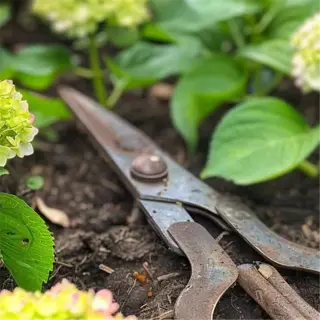
Pruning Shears
- Blade Type: Bypass for clean cuts
- Disinfection: Soak in 70% alcohol weekly
- Sharpening: Use 1000-grit stone monthly
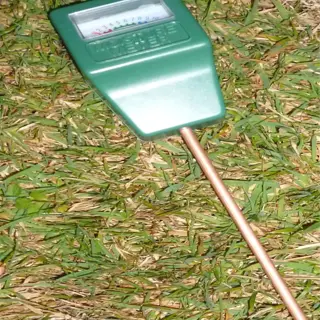
Soil Moisture Meter
- Depth: 6-8 inch (15-20 cm) probe
- Calibration: Test against hand-check method
- Battery: Replace CR2032 annually
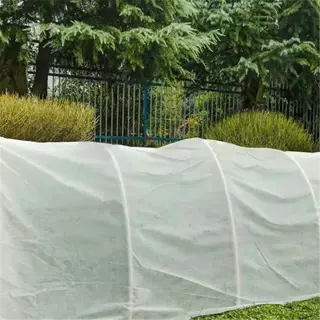
Row Covers
- Material: 0.5 oz/sq yd (17 g/m²) polypropylene
- Installation: Use hoops for air gap
- Ventilation: Remove above 75°F (24°C)
Harvesting and Storage
When the budding artichokes are around 3-4 inches (7.6-10 cm), and the bracts are tightly closed, it is time to harvest. After all, there is a slight purple blush, which indicates that it is at that peak of flavor. To test the readiness of the buds, squeeze them too. If the bracts feel springy, the artichokes are underripe, and if they feel stiff, they are overmature artichokes. Harvest in the early morning, as the buds will remain crisper than at the end of the day.
Refrigeration extends bud freshness for 2-3 weeks. Keep unwashed artichokes in perforated bags. The ideal temperature is 32°F (0°C) at 95% relative humidity. Freezing involves 7 minutes of blanching trimmed hearts, cooling by placing them in cold water to stop the cooking process, and then vacuum-seal the half hearts and freezing. Frozen artichokes maintain quality for 10 months but texture will suffer.
Using sterile pruning shears, cut the stems 1-3 inches (2.5-7.6 cm) below the bud. Make cuts slightly angled downward to help shed rainwater from the stem. I recommend curing the skimmed stems in my root cellar (50°F (10°C)) for 48 hours before storing them. Curing them in this way reduces the risk of mold by 60%.
Successful long-term storage starts with preparation. Dehydrate dried sliced hearts in a 135°F (57°C) dehydrator until they become brittle. After they are brittle, pack them in jars or bags. Put some oxygen absorbers in if you have them. If you prefer, you may also pickle the dried buds in a vinegar brine and garlic. Check jars every month to ensure the seal is intact. If the lids bulge, discard them.
Bud Readiness
- Visual Cue: Tight, unopened bracts with slight purple tinge
- Firmness Test: Squeeze gently - no springback indicates overmaturity
- Timing: Harvest morning buds for maximum turgor pressure
Cutting Technique
- Stem Length: Leave 2-3 inches (5-7.6 cm) below bud
- Angle: 45° cut to prevent water pooling
- Tools: Sterilized shears dipped in 70% alcohol
Immediate Post-Harvest
- Field Cleaning: Remove outer 2-3 bracts with dirt
- Hydrocooling: Submerge in 34°F (1°C) water for 30 minutes
- Temporary Storage: Perforated plastic bags at 32°F (0°C)
Refrigeration
- Temperature: 32°F (0°C) at 95% humidity
- Duration: Up to 21 days in crisper drawers
- Prep: Wrap in damp paper towels before bagging
Freezing Methods
- Blanching: 3 minutes in boiling water + ice bath
- Vacuum Seal: Remove air to prevent freezer burn
- Shelf Life: 10-12 months at -0.4°F (-18°C)
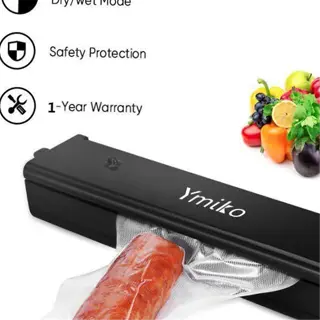
Vacuum Sealer
- Settings: Moisture mode for fresh produce
- Bag Size: 8x12 inch (20x30 cm) for large buds
- Seal Time: 25 seconds per 1 inch (2.5 cm)
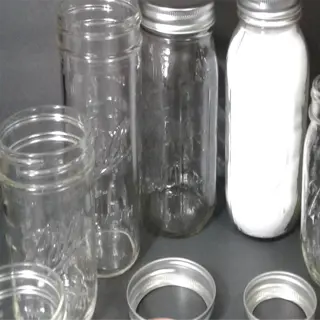
Mason Jars
- Capacity: 32 oz (946 ml) for 4-5 medium buds
- Sterilization: Boil jars 10 minutes before use
- Humidity Packs: Include 62% Boveda humidity-control packets
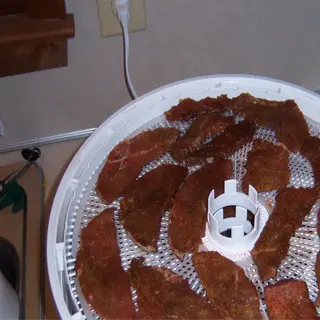
Dehydrator
- Temperature: 125°F (52°C) for 8-10 hours
- Doneness Test: Buds snap when bent
- Storage: Airtight containers with silica gel

Insulated Cooler
- Ice Packs: Use 4 lb (1.8 kg) gel packs
- Layering: Alternate buds and ice packs
- Duration: Maintains 34°F (1°C) for 48 hours
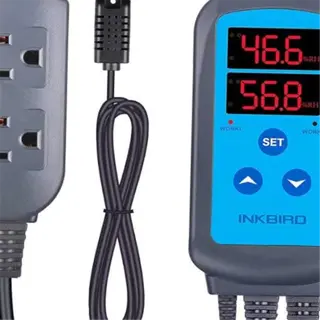
Humidity Controller
- Range: 85-95% RH for fresh storage
- Calibration: Salt test every 3 months
- Alerts: SMS notifications at 90% RH
Overwintering and Spring Revival
Zone-specific root protection affects overwinter success. In zones 3-5, uproot roots after the first frost and keep them in crates filled with peat at 35°F (2°C) until the spring. In zones 6-7, plants need to be surrounded by straw mounds that are at least a foot tall (30 cm). Clients in Zone 6b combine straw with burlap and obtain 90 % or more survival rates of the plants.
Not every mulch insulates the same amount. For example, straw will hold heat 20% better than wood chips will. Leaf mold is great in humid zones but can become matted down with snow on top of it. I like to use a layer of compost over straw in coastal areas because the microbial activity will provide heat in addition to improving soil structure naturally in the spring.
Spring pruning stimulates growth. After the danger of frost has passed, cut any surviving stems back to 6 inches (15 cm) in length. Angle the cut back to 45° shakily above outward-facing nodes. After pruning each plant, disinfect with alcohol (I use 70%) to prevent the spreading of disease from other plants. Pruned artichoke plants the previous season had produced 8 secondary buds by midsummer.
Soil, after winter months, will typically require aeration, as well as amendment. Consider pH testing for the soil, since winter rains tend to leach soil calcium. It is always a good idea to work 2 inches of (5 cm) compost into the root zones of the garden. My standard amendment mix for the soil can include worm castings and rock phosphate. Top with fish emulsion after a new shoot has grown to about 12 inches tall (30 cm).
Zones 3-5 (Sub-Freezing)
- Root Cellar Storage: Dig up plants, store in peat moss at 35°F (1.7°C)
- Mulch Depth: 12+ inches (30+ cm) straw over root zone
- Timing: Cut stems to 6 inches (15 cm) pre-first frost
Zones 6-7 (Moderate Frost)
- Mound Mulching: 18-inch (45 cm) leaf mold + soil hills
- Stem Wrapping: Burlap strips secured with twine
- Ventilation: Remove cover during winter thaws
Zones 8-9 (Mild Winters)
- Minimal Pruning: Remove only dead leaves
- Frost Cloth: Drape during <28°F (-2°C) nights
- Drainage: Elevate beds to prevent root rot
Zones 10-11 (Frost-Free)
- Dry Season Prep: Reduce watering to 0.5 inches (1.3 cm) weekly
- Pest Patrol: Apply neem oil monthly
- Mulch Renewal: Replace compost layer in early spring
Coastal Microclimates
- Salt Protection: Erect burlap windbreaks
- Soil pH: Lime to counteract acidic rain
- Timing: Delay pruning until fog season ends
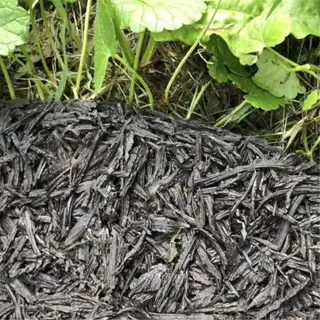
Heavy-Duty Mulch
- Material: Wheat straw (not hay)
- Application: 12-inch (30 cm) layer over roots
- Longevity: Lasts 4-5 months in snow
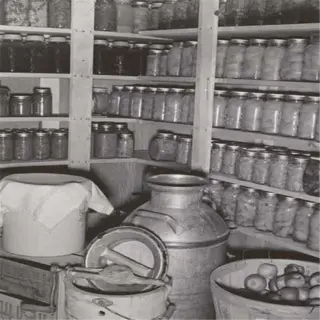
Root Cellar Storage
- Humidity: 85-90% with damp sand bedding
- Temperature: 32-40°F (0-4°C)
- Duration: Viable for 120 days
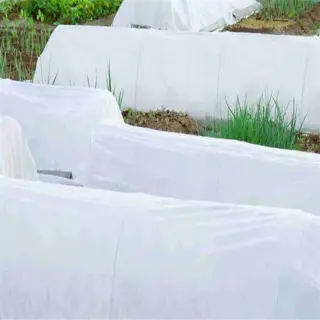
Frost Blankets
- Weight: 0.5 oz/sq yd (17 g/m²)
- Coverage: 10x12 ft (3x3.7 m) per roll
- R-value: 2.5 insulation rating
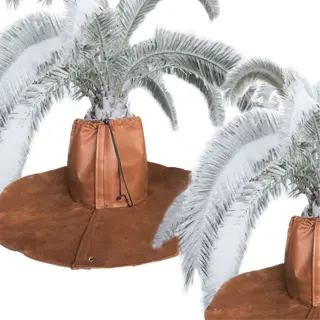
Thermal Plant Covers
- Material: Foam-lined polypropylene
- Fit: 3-4 ft (0.9-1.2 m) diameter
- Vents: Adjustable airflow flaps

Soil Heating Cables
- Wattage: 10W per linear foot (30W/m)
- Depth: Bury 6 inches (15 cm) deep
- Cost: $0.15/day at 8-hour runtime
5 Common Myths
Artichokes need an inflexible hotter tropical climate to produce edible buds.
Artichokes grow well in Mediterranean climates with mild, foggy summers and can tolerate temperatures down to 25°F (-4C). Imperial Star and other cold-tolerant varieties can grow and produce buds reliably in the zones 5-9 with good vernalization.
Too much fertilizer leads to bigger, better artichoke harvests.
Too much nitrogen will cause the stems to go hollow and less bud development. You need to be using a balanced fertilizer (like 10-10-10), and apply once a month. Consider adding calcium supplements to avoid stem tip burn. Mint or overfed plants may attract more aphids and leaf curling may be a symptom.
Container-grown artichokes cannot produce full-sized harvests.
Dwarf varieties like Emerald yield 8-10 buds annually in 24-inch (61 cm) pots with 6+ hours of sun. Use loamy soil mix and drip irrigation for 85%+ success rates.
All artichoke types are grown annually in all growing zones.
Perennial growth is zone 8-11. Rest of us replant (or overwinter roots in peat at 35F / 2C). Green globe could be 3+ years but it only grows in frost free places
The buds will become bigger if left on the plant after harvest.
Buds become woody and unfit for consumption about a week after reaching maturity. The ideal time to harvest is at 3-4 inches (7.6-10 cm) in diameter when the bracts are closed tightly. If you wait to pick them, your yield for next year will be reduced by 40%.
Conclusion
Understanding how to grow artichokes depends upon three considerations: prudent variety, soil composition, and seasonal timing. Gardeners located in Zones 3-7 praise the frost tolerance of the Imperial Star variety while those in warmer regions rave about the growth habit of the Green Globe. Their success depends upon appropriate soil amendment with compost and gravel, as will yours!
Overwintering yields dividends in northern climates. My clients in Zone 5b have been using perennial plants in their gardens for 3+ years by mounding 45cm (18 inches) of straw around their roots and wrapping the stems in burlap. In the spring, the mounded crowns of the perennial plants in these gardens survive even cell division just like new seedlings and outperform new seedlings by 40%.
Do you lack a yard? Not to worry. Rather, Emerald artichoke plants flourish just as well, or even better, in a 24-inch pot of a 60-30-10 mix of compost, perlite, and worm castings than they do in the ground. A Boston balcony gardener that I mentor had nine buds last summer, showing that small-space cultivation works!
The artichoke does more than provide valuable food. They enhance the garden without eating up the space of food, bottles of vitamins, or other pottery. Their silvery color, and serrated foliage create a great companion for lavender and rosemary. I plant them as sculptures - in my yard, the 4-foot-tall (1.2 m) species in the front yard alone receive more positive comments than any ornamental shrub.
External Sources
Frequently Asked Questions
How long does it take for artichoke plants to mature?
Artichokes typically take 85-100 days to produce harvestable buds after planting. Cold-climate varieties like Imperial Star may yield earlier, while perennial types in warm zones produce for 3-5 years once established.
Are artichokes perennial or annual plants?
Artichokes are perennial in zones 8-11 but grown as annuals in colder regions. To overwinter in zones 6-7, mulch heavily with straw or use protective covers. Northern gardeners must replant yearly or store roots indoors.
What conditions do artichokes need to thrive?
Artichokes require:
- Full sun (6+ hours daily)
- Well-draining soil with pH 6.5-7.5
- Consistent moisture via drip irrigation
- Winter protection below 20°F (-6°C)
- Nutrient-rich soil amended with compost
Can you grow artichokes in containers?
Yes, compact varieties like Emerald thrive in 24-inch pots. Use loamy soil mixed with perlite for drainage, fertilize monthly with balanced 10-10-10 formula, and ensure containers have drainage holes to prevent root rot.
Why are artichokes expensive to buy?
High labor costs for hand-harvesting buds, limited growing regions, and perishability during transport increase prices. Homegrown artichokes bypass these costs, yielding 6-12 buds per plant annually.
What are the health benefits of artichokes?
Artichokes provide:
- High fiber for digestion
- Antioxidants like cynarin for liver health
- Prebiotics to support gut bacteria
- Low calories (60 per medium bud)
- Potassium and vitamin C
How do you prevent pests on artichokes?
Use integrated pest management:
- Release ladybugs for aphid control
- Apply neem oil weekly to deter slugs
- Remove infected leaves promptly
- Use row covers during peak pest seasons
Can dogs safely eat artichokes?
Yes, cooked plain artichoke hearts are safe for dogs in small amounts. Avoid raw artichokes, seasonings, or canned varieties with added salt. Monitor for choking hazards due to fibrous leaves.
What's the best fertilizer for artichokes?
Use balanced organic options:
- Fish emulsion every 3 weeks
- Compost tea during bud formation
- Calcium-rich amendments to prevent tip burn
- Avoid high-nitrogen formulas that reduce yields
Why do artichoke buds turn brown and woody?
Overmature buds develop tough bracts if not harvested when 3-4 inches wide. Heat stress above 85°F (29°C) accelerates hardening. Cut buds with 2-3 inches of stem for optimal tenderness.
